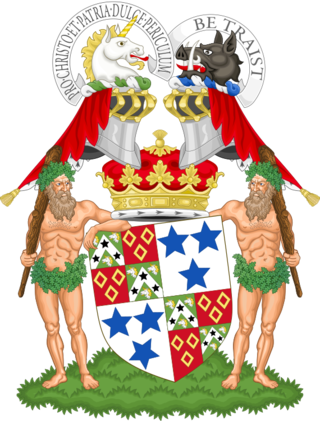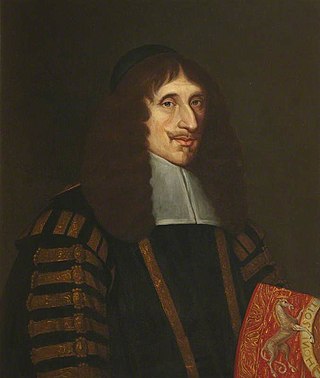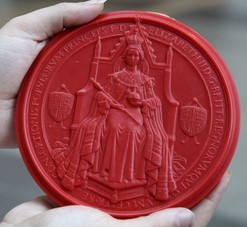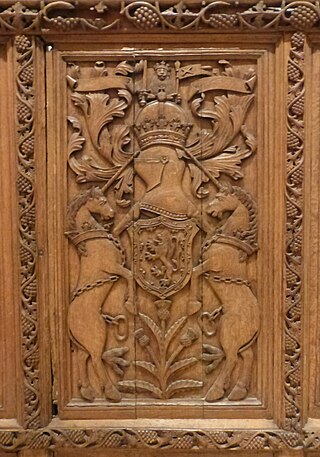| |||||
| Centuries: | |||||
|---|---|---|---|---|---|
| Decades: | |||||
| See also: | List of years in Scotland Timeline of Scottish history 1705 in: England • Wales • Elsewhere | ||||
Events from the year 1705 in the Kingdom of Scotland .
| |||||
| Centuries: | |||||
|---|---|---|---|---|---|
| Decades: | |||||
| See also: | List of years in Scotland Timeline of Scottish history 1705 in: England • Wales • Elsewhere | ||||
Events from the year 1705 in the Kingdom of Scotland .
Date unknown
Date unknown

The Duke of Roxburghe is a title in the peerage of Scotland created in 1707 along with the titles Marquess of Bowmont and Cessford, Earl of Kelso and Viscount Broxmouth. John Ker, 5th Earl of Roxburghe became the first holder of these titles. The title is derived from the royal burgh of Roxburgh in the Scottish Borders that in 1460 the Scots captured and destroyed.

Earl of Loudoun, named after Loudoun in Ayrshire, is a title in the Peerage of Scotland. It was created in 1633 for John Campbell, 2nd Lord Campbell of Loudoun, along with the subsidiary title Lord Tarrinzean and Mauchline. The 1st Earl's wife Margaret was the granddaughter and heiress of Hugh Campbell, who had been created Lord Campbell of Loudoun; he resigned the peerage in favour of his grandson-in-law, who was later created an earl.

John Campbell, 1st Earl of Loudoun was a Scottish politician and Covenanter.

Marquess of Linlithgow, in the County of Linlithgow or West Lothian, is a title in the Peerage of the United Kingdom. It was created on 23 October 1902 for John Hope, 7th Earl of Hopetoun. The current holder of the title is Adrian Hope.

Earl of Annandale and Hartfell is a title in the Peerage of Scotland, created in 1661 for James Johnstone.

The Great Seal of Scotland is a principal national symbol of Scotland that allows the monarch to authorise official documents without having to sign each document individually. Wax is melted in a metal mould or matrix and impressed into a wax figure that is attached by cord or ribbon to documents that the monarch wishes to make official. The earliest seal impression, in the Treasury of Durham Cathedral, is believed to be the Great Seal of Duncan II and dates to 1094.

The office of Keeper of the Privy Seal of Scotland, one of the Great Officers of State, first appears in the reign of David II. After the Act of Union 1707 its holder was normally a peer, like the Keeper of the Great Seal. The office has remained unfilled since the death of Gavin, Marquess of Breadalbane in 1922.
Robert Ker, 1st Earl of Roxburghe was a Scottish nobleman.
Extraordinary Lords of Session were lay members of the Court of Session in Scotland from 1532 to 1762, and were part of the historical judiciary of Scotland.

John Ker, 1st Duke of Roxburghe, KG, PC, FRS was a Scottish nobleman.

The Lord High Commissioner to the General Assembly of the Church of Scotland is the Scottish monarch's personal representative to the General Assembly of the Church of Scotland, reflecting the Church's role as the national church of Scotland and the monarch's role as protector and member of that Church.
Events from the year 1706 in the Kingdom of Scotland.
Events from the year 1704 in the Kingdom of Scotland.
Events from the year 1701 in the Kingdom of Scotland.
Walter Campbell, 3rd of Shawfield and Islay and 9th of Skipness was a Scottish landowner, advocate and Rector of Glasgow University.
The Squadrone Volante or New Party was a political grouping in Scotland which emerged around 1700 as an offshoot of the opposition Country Party. Led by John Ker, 5th Earl of Roxburghe and John Hay, 2nd Marquess of Tweeddale, the party was influential in passing the Act of Union with England in 1707.
Events from the year 1707 in the Kingdom of Scotland, then Scotland.
Events from the year 1716 in Scotland.
Robert Ker, 3rd Earl of Roxburghe PC was a Scottish nobleman.
John Bellenden, 2nd Lord Bellenden was a Scottish nobleman.